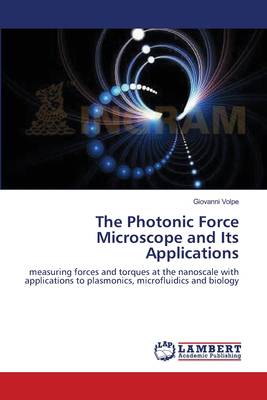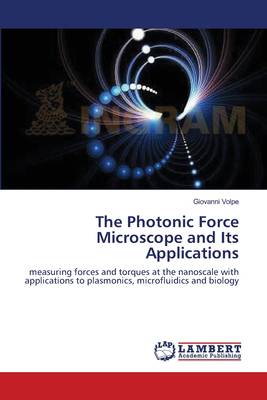
- Afhalen na 1 uur in een winkel met voorraad
- Gratis thuislevering in België vanaf € 30
- Ruim aanbod met 7 miljoen producten
- Afhalen na 1 uur in een winkel met voorraad
- Gratis thuislevering in België vanaf € 30
- Ruim aanbod met 7 miljoen producten
Zoeken
The Photonic Force Microscope and Its Applications
measuring forces and torques at the nanoscale with applications to plasmonics, microfluidics and biology
Giovanni Volpe
Paperback | Engels
€ 99,45
+ 198 punten
Omschrijving
The ability of detecting forces and torques at the micro- and nano- scale is of fundamental importance. The photonic force microscope (PFM) had been employed to measure forces in the range of femto- to pico-Newton in many di erent fields with exciting applications in biophysics, thermodynamics of small systems, and colloidal physics. Here, after an introductive overview of a typical PFM setup, we discuss the three main aspects necessary to understand the PFM, i.e. optical trapping, Brownian motion in an optical trap, and position detection. In the second part of the book, we describe some applications of the PFM: the measurement of plasmon radiation forces, the photonic torque microscope and the measurement of the torque produced by a vortex light beam, the measurement of the characteristics of microscopic ows, and some applications with trapped cells.
Specificaties
Betrokkenen
- Auteur(s):
- Uitgeverij:
Inhoud
- Aantal bladzijden:
- 188
- Taal:
- Engels
Eigenschappen
- Productcode (EAN):
- 9783838311371
- Verschijningsdatum:
- 21/05/2010
- Uitvoering:
- Paperback
- Afmetingen:
- 152 mm x 220 mm
- Gewicht:
- 281 g

Alleen bij Standaard Boekhandel
+ 198 punten op je klantenkaart van Standaard Boekhandel
Beoordelingen
We publiceren alleen reviews die voldoen aan de voorwaarden voor reviews. Bekijk onze voorwaarden voor reviews.








